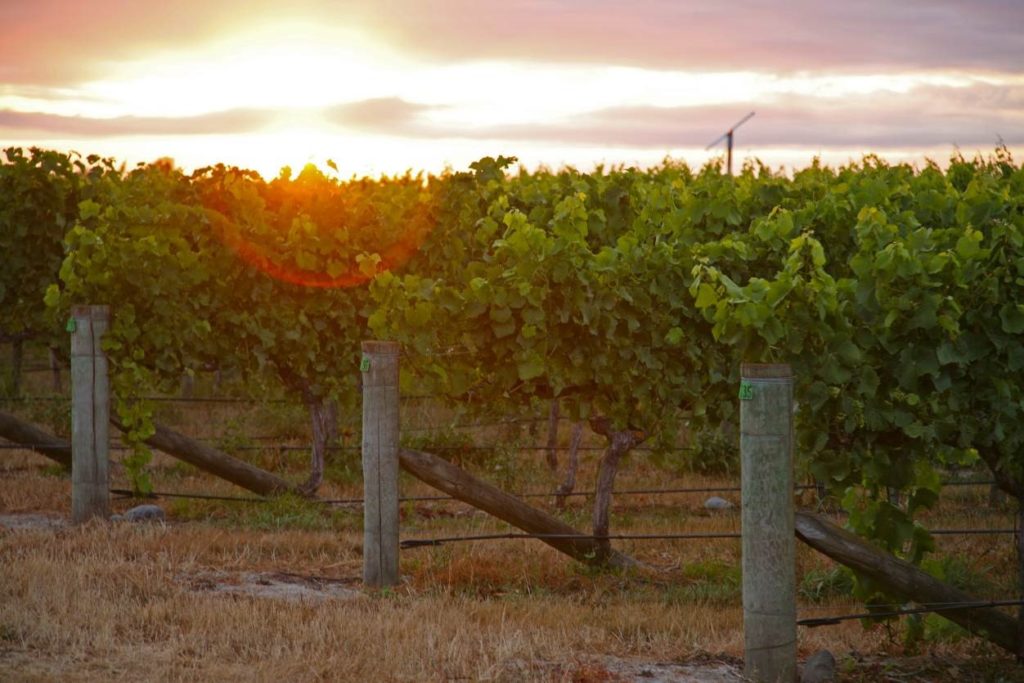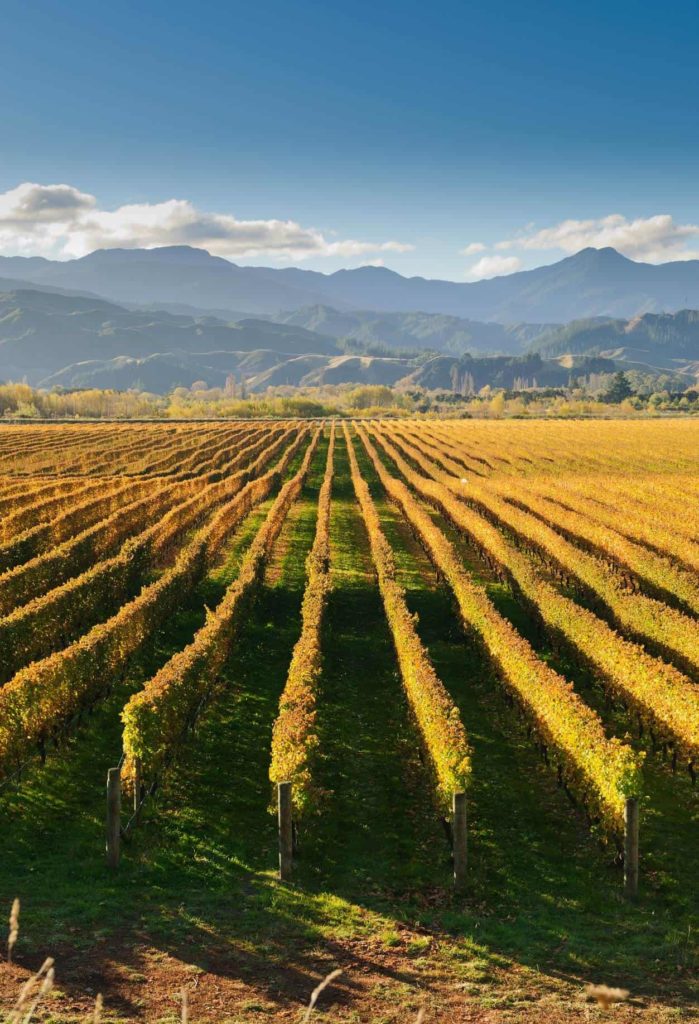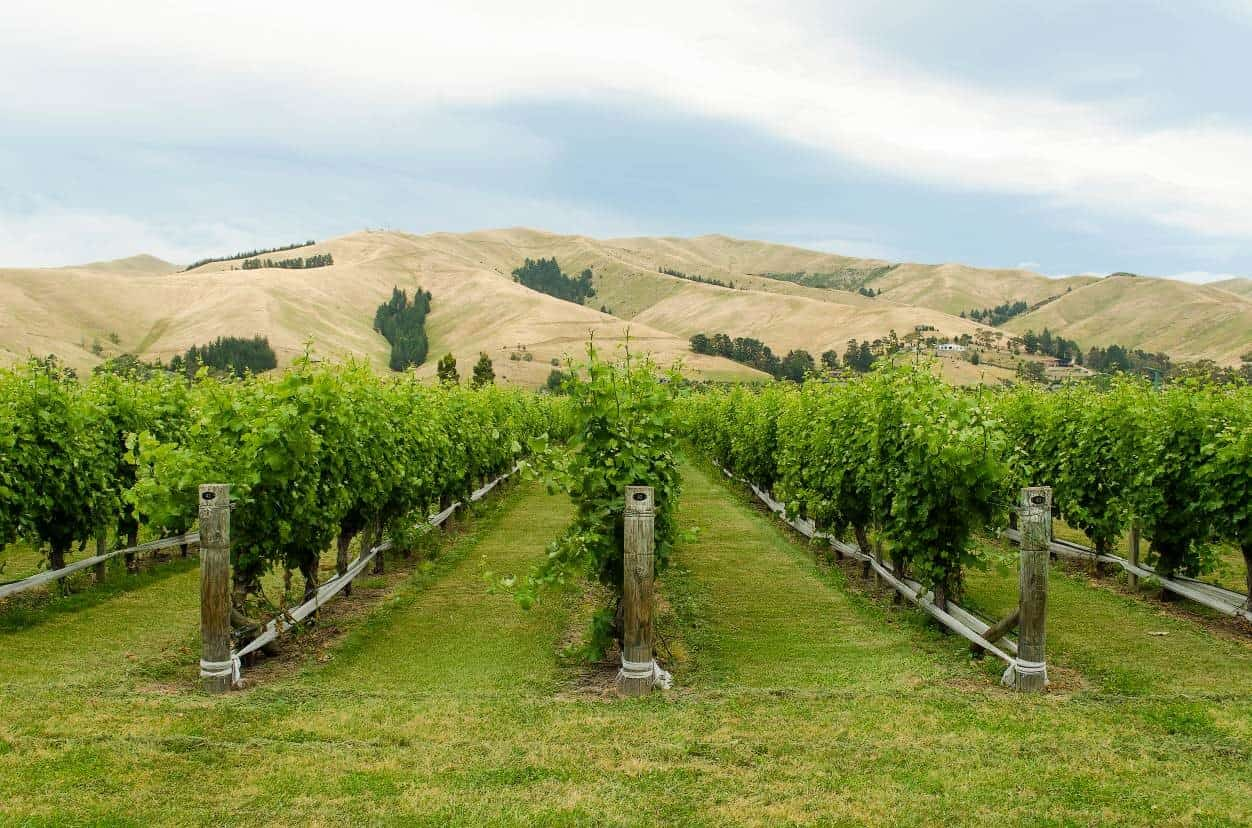
Marlborough wine region guide: the New-World home of Sauvignon Blanc

Marlborough occupies a small, northern corner of New Zealand’s South Island. The region’s name translates to ‘the place with a hole in the clouds’, appropriately describing why viticulture is so successful there. In fact, 70% of the country’s vines grow in the region. Despite viticulture dating back to the 1870s with the cultivation of Brown Muscat, it wasn’t until a century later that commercial viticulture began. The New Zealand wine region witnessed a huge boom between 2002 and 2008. Wine grape cultivation jumped from 5,730ha to 22,000 in just five years.
In just over 50 years, the Marlborough wine region has transformed itself from a backwater region dedicated to sheep farming to the new world epicentre of Sauvignon Blanc. This iconic grape, indigenous to the Loire Valley, has become synonymous with New Zealand wine, and for good reason. Global demand continues to rise for this aromatic and refreshing wine style.
Marlborough’s output is more diverse than just Sauvignon Blanc. The local Pinot Noir, and Chardonnay are superb. Fast-emerging stars also include Albariño, Gruner Veltliner, Riesling, and Viognier. Winegrowers are also producing some fantastic sparkling wine.
Click on a link to jump to that section:
Geography and terroir
The climate could not be more suitable for viticulture. This area of New Zealand is sunny but nocturnally chilly; the region enjoys a maritime climate characterised by a long, temperate growing season. Fortunately, the Tasman ranges protect the Marlborough vineyard sites from ocean winds and rain.
Marlborough offers producers an attractive combination of long days, cool nights, and astonishingly clean air. Growers can leave their grapes on the vine until autumn, accumulating sugars without sacrificing freshness and acidity. The region also has some of the youngest soils in the world, including sandy loams, gravel, clay, and alluvial silts. This provides endless opportunities to match a particular grape variety to the right site.

Marlborough sub-regions
Wairau Valley
This is the spiritual home of Kiwi Sauvignon Blanc. The soils here include mineral-rich sandy loams. Wairau Valley is a veritable paradise for the ambitious winegrower and, as a result, continues to attract both domestic and international investors. Some of New Zealand’s oldest wineries are centred around the town of Blenheim, in the lower section of the valley. Here, cool winds envelop the vines at night, courtesy of the Cook Straight. This helps to produce some of New Zealand’s most fragrant Sauvignon Blanc.
Awatere Valley
The Awatere Valley, located due south, is drier and cooler than its neighbour. It is an expansive zone with various soil types, including silty loams, sand, gravel, and clay. In this cool climate, the growing season tends to be later than in Wairau Valley. Nonetheless, the typically dry summer usually ripens the crop. Chardonnay, Pinot Gris, Riesling and, of course, Sauvignon Blanc are cultivated in this region. The best vineyard sites are planted on well-drained gravel/loamy soils – Awatere is known for its high groundwater level. Nevertheless, it is celebrated for producing unbelievably fresh and aromatic wines.
Southern Valleys
Marlborough’s smallest (but up-and-coming) sub-zone is located between Wairau and Awatere. The vines are planted along several valleys south of the Wairau River, named Omaka, Fairhall, Brancott, Ben Morvan and Waihopai. Well-drained vineyards planted at higher elevations yield the best fruit, particularly when cultivated on mineral-poor clay soils. In recent years, the quality of Southern Valleys Pinot Noir has soared.
Key grape varieties
White Grapes
- Sauvignon Blanc – it was Marlborough Sauvignon Blanc that first attracted consumers to New Zealand wine. The grape needs a cool and sunny climate to produce an intense but fresh white wine with mouth-wateringly crisp fruit. Marlborough’s sunny maritime weather provides precisely this.
- Chardonnay – Marlborough-grown Chardonnay is among the finest in New Zealand: full-bodied, complex, and rich. Low-vigour clay terroirs produce the best results.
- Pinot Gris – although Sauvignon Blanc dwarfs it in terms of volume, Marlborough Pinot Gris has become a massive hit with sommeliers. The best examples are mouth-filling and very complex.
- Riesling – lime-scented, crisp Riesling is another speciality of the Marlborough region. Packed with aromatic compounds (monoterpenes), it ages with a honeyed, toasty complexity.
Red varieties
- Pinot Noir – demand for New Zealand Pinot Noir is soaring too. A more precise approach to site selection, combined with ageing vines, yields richer, more structured red wines. The best are fragrant and juicy, with light, silky tannins.
- Syrah – although Syrah is not readily associated with Marlborough winegrowing, the best wines are truly exceptional. Expect something perfumed and peppery, with a distinct tapenade flavour on the finish.
Marlborough wine styles and production
Winemaking in the Marlborough wine region requires a cooperative approach. Output can vary considerably year on year, so growers must work together. Marlborough is famously known for its Sauvignon Blanc; meeting global demand is an immense challenge. Conversely, growers are increasingly experimenting with a more diverse portfolio of grapes and even dabbling in sparkling wine production.

Sauvignon Blanc makes up 76% of total wine production in Marlborough and is the largest producer of Sauvignon Blanc in New Zealand and the new world. Demand for it still soars despite the highest export price per litre.
The popularity of New Zealand Sauvignon Blanc is driven by the demand for light, crisp and refreshing summer beverages, so oak ageing is understandably rare. However, Sauvignon Blanc responds well to careful maturation in wood. What emerges is rounder and softer wine, often with aromas of ginger, spice and lanolin. Ageing on the fine lees (dead yeast cells) and bottle maturation is also commonly used to enhance a wine’s richness and mouthfeel.
In addition, many producers are releasing single-vineyard expressions of Sauvignon Blanc made from hand-picked, low-yielding vineyard sites.
Sparkling wine production
Marlborough is becoming an increasingly important producer of Sparkling wine. Winemakers employ the Méthode traditionelle using local Chardonnay and Pinot noir in the blend. Sparkling wine producers in the region have revised the method, calling it the Méthode Marlborough. This approach aims to rebuild respect for the local environment and heritage. The result is iconic freshness and acidity cutting through the toasty flavour.
Enjoying Marlborough wines
Intense fruit and crisp acidity are the hallmarks of Marlborough wine. Top labels of Sauvignon Blanc include Cloudy Bay and Hunter’s, with striking aromatics of green peppers, gooseberry and tropical fruit. Marlborough Sauvignon is delicate enough to pair with raw seafood. However, its fine cut of acidity reaches an apogee when matched with goats’ cheese, Thai fishcakes, langoustines, or grilled fish. Explore Marlborough sparkling wine, and try it with fresh scallops or oysters. Even the region’s seductively scented Pinot Noir is not to be missed – these delicate fruit-forward interpretations of the grape work tremendously well with roast pork and poultry.
Choose a Marlborough wine from our selection today!
What to read next
An insider’s guide to Campagne
An insider’s guide to Western Australian wine




